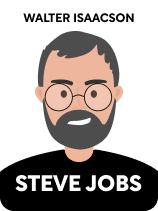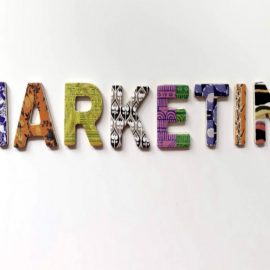

This article is an excerpt from the Shortform book guide to "Steve Jobs" by Walter Isaacson. Shortform has the world's best summaries and analyses of books you should be reading.
Like this article? Sign up for a free trial here.
What is the biography book Steve Jobs about? What are the main takeaways of the book?
Walter Isaacson’s biography of Steve Jobs is considered to be the definitive work on Jobs’s life. It’s an intimate portrait of a man who was thoughtful and callous, insightful and blind, and whose passions left a mark on the world.
Read below for an overview of Isaacson’s book Steve Jobs.
Steve Jobs by Walter Isaacson
Steve Jobs, as co-founder and CEO of Apple, was a guiding force in the electronics industry, from the development of the first home computers in the 1970s to the world-shaking impact of smartphones and tablets. The decisions Jobs made and the passions he followed had a direct impact on the way we use computers and share information. To understand Steve Jobs’s life is to understand why the modern information landscape functions the way it does.
While much has been written about Jobs’s life, Isaacson’s Steve Jobs biography book was commissioned by the tech pioneer himself. He wanted his own point of view on the record, but he didn’t want a “puff piece” that would glorify his achievements while glossing over his negative side. Instead, he tapped well-known biographer Walter Isaacson to write a book that would balance his accomplishments with an unflinching look at his personal demons. In an uncharacteristic move for the usually domineering Jobs, he allowed Isaacson full access to his life with no oversight or control of what was written. Indeed, Jobs passed away without ever having read it.
(Shortform note: Walter Isaacson first met Steve Jobs while working as a journalist for Time. When Jobs reached out about writing his biography, Isaacson had already written books on Henry Kissinger, Benjamin Franklin, and Albert Einstein. This biography was released in 2011 shortly after Steve Jobs’s death. It was a critical and commercial success, though several of Jobs’s family and friends were unhappy with Isaacson’s portrayal. The book was adapted into a 2015 film by Danny Boyle starring Michael Fassbender as Jobs.)
The biography gives an overview of Jobs’s life, from his years growing up in Palo Alto, California to his ups and downs at Apple and his battle with cancer. We will then dive deeper into the specific themes that Isaacson drew from the narrative of Jobs’s life—what made him unique as a technological innovator; the abusive, controlling dark side of his personality; and the values and vision that set Jobs apart as a leader in the corporate world.
In addition, this biography also explores Steve Jobs’s legacy as an industry giant, the wider context that shaped both his life and the Information Age, as well as other writers’ views on Jobs’s impact. Because Isaacson’s biography was published shortly after Jobs’s death, we’ll examine how Jobs’s legacy lives on in the years that have followed its release.
Steve Jobs’s Life
Steve Jobs was as much a product of his time as he was one of its chief architects. His rise to fame and tumultuous life mirrored the whirlwind of the digital revolution. Jobs came of age on the cusp of the 1970s’ computer boom, and he guided many of the 1980s’ advances. After falling out of the limelight in the ’90s, he surged back to prominence at the turn of the millennium with innovations that still impact the digital landscape to this day.
Steve Jobs’s Death
In 2003, at the age of 48, a tumor was found on his pancreas. Though it was discovered soon enough for treatment, Jobs declined to have surgery and instead insisted on fighting the cancer with alternative medical treatments.
Jobs kept the fact that he still had cancer secret, especially from Apple’s employees and shareholders. By 2008, it had spread to his liver and his illness could not be kept hidden any longer. Apple’s stock went down, and speculation about his health ran wild.
At first, Jobs was resistant to having a liver transplant, but when one became available in March 2009, he flew to Memphis for the surgery. The transplant was a success, but the doctors found signs that the cancer had spread even further. Jobs pressed forward on several new projects, such as designing a new corporate campus for Apple. He admitted to Isaacson that if he didn’t have something to work on, it would seem as if he were giving up on life.
Jobs’s final downturn began in late 2010. Always on the cutting edge, Jobs was one of the first people to have their cancer cells genetically sequenced, which allowed doctors to tailor his treatment instead of relying on broad-range chemotherapy. (Shortform note: In the years since Jobs’s diagnosis, gene-sequencing has continued to advance cancer research, helping identify the genetic mutations that lead to the growth of tumors. Making use of these advances, doctors can use molecularly targeted therapies to treat a variety of cancers while reducing the dangerous side effects of other approaches.)
By July 2011, the cancer had reached his bones. His last act at Apple was to arrange a smooth transition of power to those who would carry on in his footsteps. Steve Jobs passed away at the age of 56, surrounded by his family, on October 5, 2011.
Steve Jobs’s Legacy
Steven Paul Jobs was a man of contradictions. He was an idealist, a leader, and a visionary pioneer who earned fame and admiration for his many innovations. At the same time, he was often needlessly cruel—a demanding bully with a black-and-white worldview who insisted that everyone and everything live up to his high expectations. Isaacson argues that Jobs’s positive and negative aspects were inextricably linked, and all contributed to shaping a man who was adored and reviled, perhaps in equal measure. To make his case, Isaacson explores six themes that define how Jobs is remembered—his knack for innovation, his black-and-white thinking, his drive to merge technology with design, his dictatorial leadership style, his emphasis on product over profit, and his denial of any unwelcome reality.

———End of Preview———
Like what you just read? Read the rest of the world's best book summary and analysis of Walter Isaacson's "Steve Jobs" at Shortform.
Here's what you'll find in our full Steve Jobs summary:
- A no-fluff look into the life of Steve Jobs
- How Jobs changed the technology landscape
- What it was like to work with and for Steve Jobs






